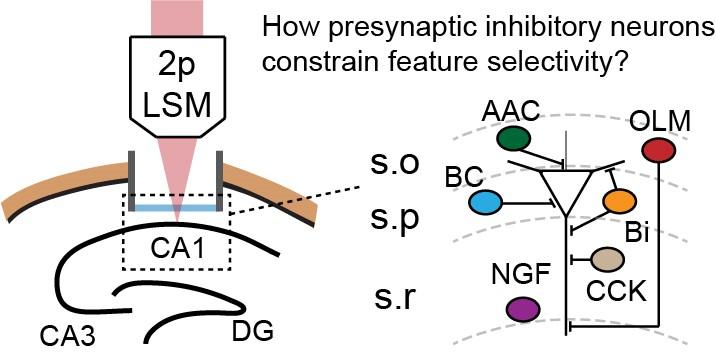Abstract:
During spatial behavior, hippocampal place cells can selectively respond to specific locations in an environment. While the contribution of distinct excitatory input pathways in generating these firing patterns is slowly unfolding, little is known about the role of local inhibitory networks in supporting these representations. Here, I will present how I attempted to address this question in 2 steps. First, I develop a method using volumetric random-access two-photon calcium imaging and retrospective molecular identification to map in vivo activity dynamics onto major interneuron classes of the mouse hippocampal area CA1 during head-fixed exploration and learning. Second, I used in vivo single-cell electroporation to perform monosynaptic rabies tracing in CA1 pyramidal cells, and imaged the functional properties of the postsynaptic neuron and its local presynaptic inhibitory ensemble during navigation. I found that the spontaneous emergence of place fields does not originate from either a global or unitary decrease in inhibition levels. I am now investigating how the local presynaptic interneurons influence the stability of postsynaptic place field.

Biography:
Tristan Geiller is a postdoctoral research scientist at Columbia University’s Zuckerman Mind Brain Behavior Institute in the laboratory of Dr. Attila Losonczy. Tristan obtained a master’s degree in engineering at the University of Technology, Troyes in France and a Ph.D. from Korea University in Seoul. His graduate work focused on characterizing the diversity of place cell representations along the radial axis of the hippocampus. Tristan’s current research interests are aimed at understanding the input-output logic of hippocampal neurons by using volumetric two-photon calcium imaging, optogenetics and single-cell—initiated rabies tracing.
Click here to register via Eventbrite
